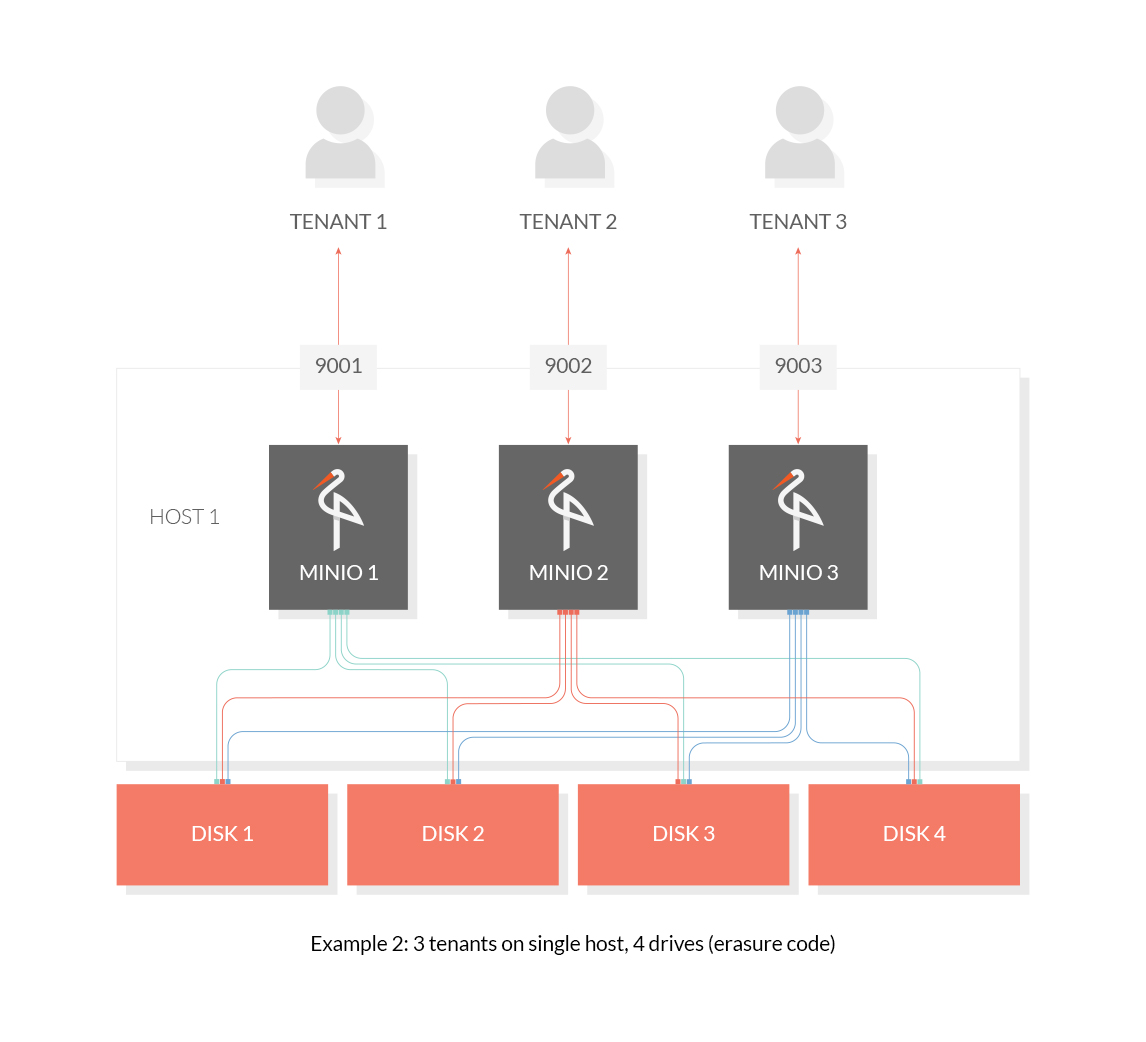- Sort Score
- Result 10 results
- Languages All
Results 1 - 10 of 16 for general (0.19 sec)
-
helm/minio/README.md
``` kubectl -n minio create secret generic minio-trusted-certs --from-file=public.crt --from-file=keycloak.crt ``` If TLS is not enabled, you would need only the third party CA: ``` kubectl -n minio create secret generic minio-trusted-certs --from-file=keycloak.crt ```
Plain Text - Registered: Sun May 05 19:28:20 GMT 2024 - Last Modified: Wed Jan 24 07:27:57 GMT 2024 - 10.9K bytes - Viewed (0) -
docs/security/README.md
Plain Text - Registered: Sun May 05 19:28:20 GMT 2024 - Last Modified: Sat Feb 12 00:51:25 GMT 2022 - 13.8K bytes - Viewed (0) -
docs/batch-jobs/README.md
USAGE: mc batch COMMAND [COMMAND FLAGS | -h] [ARGUMENTS...] COMMANDS: generate generate a new batch job definition start start a new batch job list, ls list all current batch jobs status summarize job events on MinIO server in real-time describe describe job definition for a job ``` ### Generate a job yaml ``` mc batch generate alias/ replicate ``` ### Start the batch job (returns back the JID)
Plain Text - Registered: Sun May 05 19:28:20 GMT 2024 - Last Modified: Thu Oct 06 06:00:43 GMT 2022 - 4.8K bytes - Viewed (0) -
docs/tls/kubernetes/README.md
For testing purposes, here is [how to create self-signed certificates](https://github.com/minio/minio/tree/master/docs/tls#3-generate-self-signed-certificates). ## 2. Create Kubernetes secret [Kubernetes secrets](https://kubernetes.io/docs/concepts/configuration/secret) are intended to hold sensitive information.
Plain Text - Registered: Sun May 05 19:28:20 GMT 2024 - Last Modified: Thu Sep 29 04:28:45 GMT 2022 - 3K bytes - Viewed (0) -
docs/metrics/prometheus/README.md
is configured to expose metrics without authentication, you don't need to use `mc` to generate prometheus config. You can skip reading further and move to 3.2 section. The Prometheus endpoint in MinIO requires authentication by default. Prometheus supports a bearer token approach to authenticate prometheus scrape requests, override the default Prometheus config with the one generated using mc. To generate a Prometheus config for an alias, use [mc](https://min.io/docs/minio/linux/reference...
Plain Text - Registered: Sun May 05 19:28:20 GMT 2024 - Last Modified: Fri Apr 12 15:49:30 GMT 2024 - 7.1K bytes - Viewed (0) -
docs/kms/README.md
└─────────┘ ``` In a given setup, there are `n` MinIO instances talking to `m` KES servers but only `1` central KMS. The most simple setup consists of `1` MinIO server or cluster talking to `1` KMS via `1` KES server.
Plain Text - Registered: Sun May 05 19:28:20 GMT 2024 - Last Modified: Thu Jan 18 07:03:17 GMT 2024 - 7.1K bytes - Viewed (0) -
docs/bucket/notifications/README.md
``` mc mb myminio/images mc event add myminio/images arn:minio:sqs::1:amqp --suffix .jpg mc event list myminio/images
Plain Text - Registered: Sun May 05 19:28:20 GMT 2024 - Last Modified: Thu Jan 18 07:03:17 GMT 2024 - 84K bytes - Viewed (2) -
docs/site-replication/README.md
- For [SSE-S3 or SSE-KMS encryption via KMS](https://min.io/docs/minio/linux/operations/server-side-encryption.html "MinIO KMS Guide"), all sites **must** have access to a central KMS deployment. This can be achieved via a central KES server or multiple KES servers (say one per site) connected via a central KMS (Vault) server. ## Configuring Site Replication - Configure an alias in `mc` for each of the sites. For example if you have three MinIO sites, you may run:
Plain Text - Registered: Sun May 05 19:28:20 GMT 2024 - Last Modified: Mon Feb 26 21:30:28 GMT 2024 - 3.4K bytes - Viewed (0) -
docs/multi-tenancy/README.md
```  ## 2. Distributed Deployment To host multiple tenants in a distributed environment, run several distributed MinIO Server instances concurrently. ### 2.1 Host Multiple Tenants on Multiple Drives (Erasure Code) Use the following commands to host 3 tenants on a 4-node distributed configuration: ```sh
Plain Text - Registered: Sun May 05 19:28:20 GMT 2024 - Last Modified: Thu Sep 29 04:28:45 GMT 2022 - 3K bytes - Viewed (0) -
README.md
[](https://min.io) MinIO is a High Performance Object Storage released under GNU Affero General Public License v3.0. It is API compatible with Amazon S3 cloud storage service. Use MinIO to build high performance infrastructure for machine learning, analytics and application data workloads.
Plain Text - Registered: Sun May 05 19:28:20 GMT 2024 - Last Modified: Wed Feb 14 17:51:34 GMT 2024 - 18.7K bytes - Viewed (0)